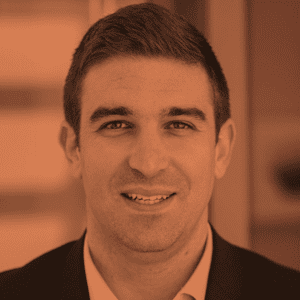
Turning Efforts into Impact: Measuring Your Online Community’s Value
Hear from 3 of our Engagement Experts about how they set online community KPIs & goals, measure their impact, and then share internally about the community’s value.
When your role involves nurturing an online community and carrying members’ voices back into your organization, it can be a challenge to properly convey the value your community drives.
Three online community builders (three of our Engagement Experts) joined me to discuss measuring & communicating the value of your online community. The differences in their organizations, approaches, and make-up of their communities provided a wealth of information on how they go about measuring what matters.
We talked through these questions: What are the different ways that you’re demonstrating value to others in the organization? How are you telling that story? And making sure that community is coming through when you’re inside the organization and having discussions?
We heard from:
- Marjorie Anderson, Product Manager, Project Management Institute
- Age of Community: 20 Years
- Approximate Size of Community: 700,000
- Chris Detzel, Community Program Manager, Reltio
- Age of Community: 30 Days
- Approximate Size of Community: 300
- Kim FitzSimmons, Chief Marketing & Communications Officer, American Association of Endodontists
- Age of Community: Relaunched in 2020
- Approximate Size of Community: 8,000
Rather watch this webinar than read the recap? Access the on-demand video here.
Measuring Success for Your Online Community
“Metrics only tell a little bit of the story. Internally, you need to go build the rallying cry to make sure everyone understands how this community rolls up into other initiatives that you’re working on.”
– Chris Detzel
How do you think about success, and measuring that for the community you have today?
Marjorie Anderson
- “When we look at the types of things that we want to accomplish, it’s not just sharing content, but sharing quality content that their peers recognize as helpful. We look at how we connect the members to the rest of the organization and to other products and services to help make them more successful.
- There are 3 key things we measure:
- Community Vibrancy: How many people are coming back to the community? How many people are bringing others with them? How many people are unique and new to our community?
- Engagement: How well is the member content doing? How often do they put out content? Are they sharing?
- Impact: Are we helping to support membership purchases? How well are we helping to support the discovery of new products and services? How well are we enabling the organization as a whole to discover new ways to serve our members?
- On determining vibrancy: It’s also anecdotal; people are telling us how they’re finding us, and they’re coming from social spaces. They are coming on personal networks that are coming from organizations where we have relationships.”
Kim FitzSimmons
- “We look at metrics on community health and engagement, and in addition, how we support our business needs.
- Much of what our leadership looks at is activity: What kind of engagement do we have on posting? What’s that ratio to the number of members we have in the community? Are people responding? What’s the reach – how many of our members are participating?”
Chris Detzel
- “When you start a community, it doesn’t have to be this out-of-control approach to metrics. I look at the strategic goals of the business, and I tie the community goals into those strategic themes.
- We want to put out lots of really good questions & answers about our products, so that customers can get their answer quickly. To do that you have to acquire customers in your community, so I have a focus on building our new community to 300 users by year end.
- On defining active members: Do they login? Do they apply? Do they ask? I would say, if they did any of those things in the last X number of days, then they’re active.”
Extending an Online Community’s Impact
“One of the things we start with is what’s the outcome of what we wanted to do. Because there are tons of things we can do within the online community, but what outcome will we drive? How will we measure the effectiveness or that we had an impact?”
– Marjorie Anderson
How do you know whether the tactics you implement in the community help you meet your goals?
Kim FitzSimmons
- “When we had to cancel our meeting [due to the pandemic], we did a walkathon last summer. We wanted to engage members, and it was also a fundraising activity. It brought the community together and raised money for the specialty.
- Something we’d love to build out because it’s very manual right now is looking at the members and the kind of interactions they have, and then tie that all back to who interacted and how they participate in the larger program.”
Chris Detzel
- “The way I think about it is this: What are our goals? And how do I accomplish those goals? Our goals are to get customers and partners more engaged into our product, so we think about how we can use community to do that.
- For example, with community webinar programs, I put those into three categories: Technical Deep Dive, New Product Updates, Ask Me Anything sessions. Then, I look at the long-term game and use webinar video content on YouTube, create blogs around the webinar topics and audience questions, and I can push that out to the community. I can measure the success over time through Google Analytics. Our brand can take that content and use it. So, it’s not just me, it’s shared across the entire business.”
Marjorie Anderson
- “One of my team members had the idea to start quarterly “Ask Us Anything” webinars. These are webinars with other stakeholders within the organization where we introduce a new concept, product, or service, and allow the community to provide feedback or ask questions about that product, service, or experience. We’re able to see from these webinars how interesting or how impactful that is going to be.
- It’s a mutual benefit where the community gets to understand what’s happening and they stay close to the organization. The product teams or the other parts of the organization get to understand if we’re headed in the right direction.”
Shaping the Story of Your Online Community’s Value
“When we get to communicating value, storytelling helps tell a broader story to your board and to your leadership about the value of communities.”
– Kim FitzSimmons
How are you telling the story internally?
Chris Detzel
- “It’s all about your audience. I focus on the aspect of the story that will resonate most with that department. For example, if I’m talking to product, they’ll care about how we’re inviting innovation from customers in the community. I sent our CEO an article about how communities deflect cases and the ROI attached to it every month. He got excited about that. Why? Because he cares about savings.
- I enlist technical architects at my company to help me create community content, so to recognize those people, I tell stories.”
Marjorie Anderson
- “This is a fun question. I generally have lots of meetings with business owners within the organization. We present information on the outcomes we’re looking to achieve, what the impact was, and what’s next. Reports are typically one to two pages with very specific information. And what generally happens is these documents help tell the story around the data you’re going to present.
- Even if you’ve got a chart full of numbers, we tend to reframe that into an outcome layout, so that not only is it information that the other business leaders within the organization understand, but it’s also information and language that our senior leaders already use.
- When we’re thinking about how we’re going to accomplish things in the future and what that strategy looks like we speak the same language. It’s always around the outcomes that we’re trying to drive, and what the impact is to the member or the organization.”
Kim FitzSimmons
- “Our board and our leadership are very engaged and very interested in our community. We tell stories focused around goals and results, but I also bring in anecdotal stories to support that case. For example, we’ve heard from a program director that he’s not reusing the exact same cases over and over. He’s now getting new content to present because of our community.”
Want to learn more? These three Engagement Experts shared more detail on what to measure, how to know whether you’re affecting those metrics, and different ways to demonstrate value in the on-demand webinar.



